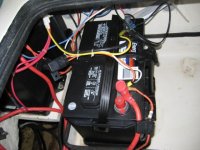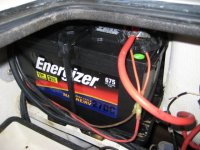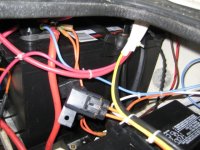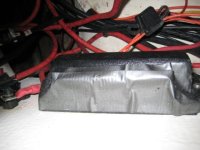You know, it's a shame that this year has been so bad from a business perspective. Working harder for less money, leaving no time for the TomCat. Which means I am playing catch up here a bit on issues that should have been dealt with in this summer when I got the boat. 
Today, I finally had time to build a 150' 10/3 power cord to get the boat powered up and get the batteries charging. I went to check the water level in the batters and was surprised to see water standing on the batteries and, not surprisingly, corrosion on the battery posts. It seems rain water has been draining into the battery box. So much for the lid seal. The water level was fine on the batteries. Wonder how much of that is rain water. (sigh)
How do you folks deal with this problem? If I can't keep the batteries dry, maybe I should switch to sealed batters and have them moved into the house? The timing might be right to get this done over winter, as I have other electrical work to get done (economy notwithstanding): there is corrosion on the bus bars (shouldn't these be covered?), and I still want to swap out the electronics, install the radio, add music, etc. If I move the batteries, maybe I could use the battery box for a small generator?
---
mike
Today, I finally had time to build a 150' 10/3 power cord to get the boat powered up and get the batteries charging. I went to check the water level in the batters and was surprised to see water standing on the batteries and, not surprisingly, corrosion on the battery posts. It seems rain water has been draining into the battery box. So much for the lid seal. The water level was fine on the batteries. Wonder how much of that is rain water. (sigh)
How do you folks deal with this problem? If I can't keep the batteries dry, maybe I should switch to sealed batters and have them moved into the house? The timing might be right to get this done over winter, as I have other electrical work to get done (economy notwithstanding): there is corrosion on the bus bars (shouldn't these be covered?), and I still want to swap out the electronics, install the radio, add music, etc. If I move the batteries, maybe I could use the battery box for a small generator?
---
mike





